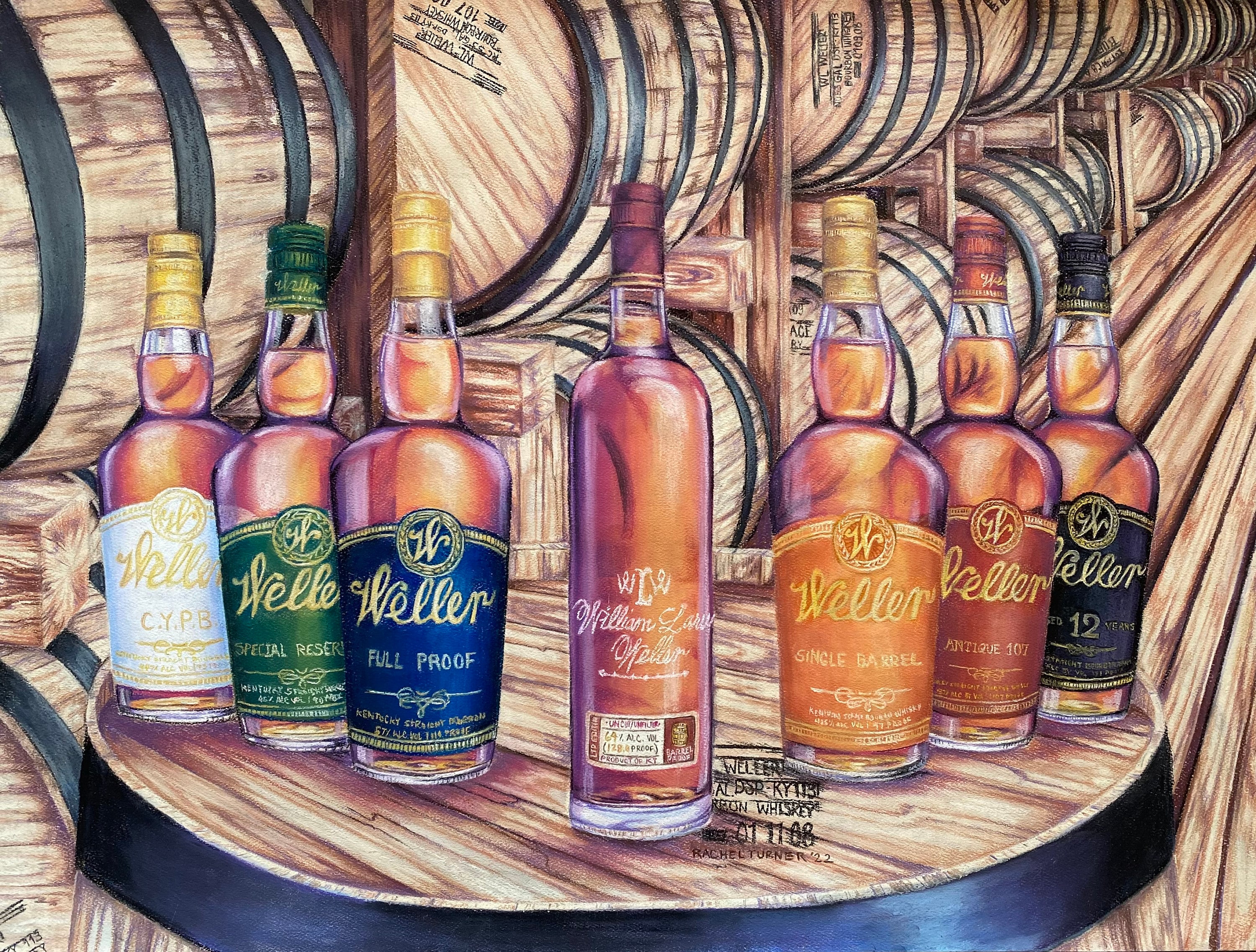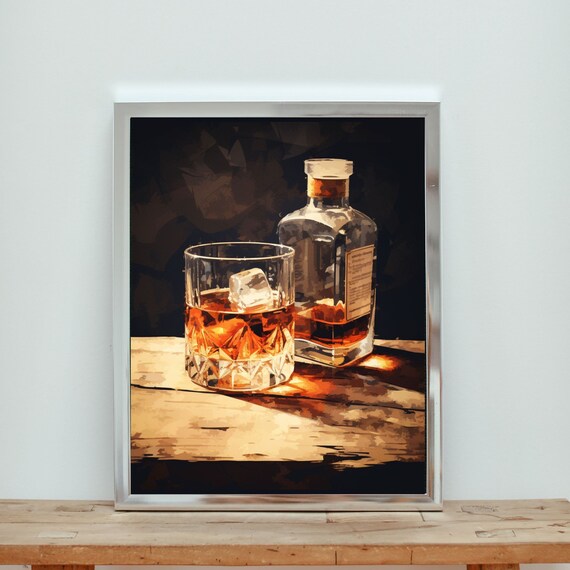Change Your Space with Sensational Whiskey Art Inspired by Nature
Wiki Article
The Relevance of Whiskey Art in Celebrating Heritage and Workmanship in the Beverage Industry
The detailed connection between bourbon art and the event of heritage and workmanship within the beverage industry can not be overemphasized. Through thoughtfully designed containers and tags, bourbon brands envelop their historical origins and the artisanal abilities that define their manufacturing techniques. This creative dimension not only enhances market appeal however also works as a conduit for cultural narration, cultivating a deeper connection in between the craft and the consumer. As we discover the numerous facets of this subject, fascinating concerns about the influence of modern-day patterns on standard practices occur, triggering more evaluation.The Historic Origins of Whiskey
At the heart of scotch's appeal exists an abundant tapestry of historic roots that map back to old civilizations. The beginnings of whiskey can be connected to the purification practices of the Sumerians and Babylonians around 2000 BCE, where very early types of fermented grain drinks began to arise. However, it remained in the Center Ages that the art of purification progressed substantially, specifically in Ireland and Scotland, leading to the development of scotch as we understand it today.
The term "scotch" itself stems from the Gaelic word "uisce beatha," implying "water of life." This phrase highlights the social value of whiskey in Celtic societies, where it was typically connected with rituals, celebrations, and communal bonding. By the 15th century, purification ended up being an acknowledged craft within monastic neighborhoods, leading the way for the facility of legal distilleries.
As profession paths expanded, bourbon's appeal expanded, going beyond regional boundaries and capturing the rate of interest of lovers worldwide. Limited Edition. This historical trip shows not just the craftsmanship behind scotch production however also its integral duty in social and social contexts, noting it as a significant beverage throughout background
Artistic Expression in Branding
Scotch branding stands as a compelling crossway of artistry and business, where visual identification plays a critical duty in shaping customer understanding. The visual appeals of scotch labels, packaging, and advertising and marketing products show not just the brand's story but also its core values and heritage. Through artistic expression, distilleries share a story that resonates with customers, stimulating emotions and stimulating connections.Making use of color, typography, and images in branding serves to distinguish products in a saturated market. For instance, typical concepts may stimulate a sense of authenticity and workmanship, while contemporary layouts can symbolize advancement and forward-thinking. This tactical artistic direction improves brand name recognition and commitment, permitting consumers to build a personal connection with the bourbon they pick.
In addition, imaginative expression in branding commonly works as an event of local heritage. Distilleries frequently include local icons or historical recommendations into their designs, creating a local color that welcomes customers to participate in a wider cultural experience. Inevitably, the virtuosity behind bourbon branding not only improves visual charm but also enriches the overall story of the brand name, fostering a deeper recognition for the craftsmanship and heritage ingrained in each bottle.
Craftsmanship in Container Style
The creativity apparent in scotch branding prolongs beyond visual identity to encompass the craftsmanship associated with bottle layout. Each bottle acts as a vessel not simply for the spirit within, yet also for the story it outlines its beginning, tradition, and quality. The design procedure needs meticulous interest to detail, as elements such as form, material, and closure add dramatically to the overall perception of the bourbon.Workmanship in bottle style involves selecting top notch glass that can enhance the bourbon's shade and clearness, while likewise offering a responsive experience for the consumer. The shape of the container need to be both aesthetically enticing and practical, usually reflecting the heritage of the brand name. Lots of distilleries go with unique shapes or embossed logo designs that stimulate a sense of authenticity and background.
Moreover, the label design and typography play a vital that site role in connecting the brand's narrative. Limited Edition. A well-crafted bottle not only astounds the consumer's eye yet also enhances the brand's dedication to top quality and practice. This way, the craftsmanship of bottle style ends up being a crucial element of the scotch experience, merging creativity with an extensive regard for heritage
Social Importance of Whiskey Art
Celebrating custom and workmanship, the cultural significance of whiskey art transcends mere aesthetic appeals, linking with the social and historic narratives of the regions from which it comes from. Each container functions as a canvas, illustrating the unique tales, mythology, and practices that have actually formed neighborhood whiskey-making methods. The elaborate designs typically mirror the heritage of the distillers, incorporating symbols and themes that reverberate with the society and values of their neighborhoods.On top of that, whiskey art plays a vital duty in communal gatherings and celebrations, serving as a substantial web link in between individuals and their shared experiences. By appreciating the creativity in bourbon product packaging, consumers cultivate a deeper understanding and regard for the craft, inevitably enriching their satisfaction of the beverage itself.
Modern Trends in Bourbon Presentation
In current years, the presentation of whiskey has actually evolved to reflect contemporary preferences and trends while still recognizing typical workmanship - Limited Edition. Distilleries are progressively concentrating on aesthetic aspects that boost the general alcohol consumption experience, linking the space between heritage and modernityInnovative container layouts have emerged, commonly including lasting materials and artistic tags that tell compelling tales. Many brand names currently team up with local artists, infusing their products with distinct visual expressions that resonate with consumers. Additionally, limited-edition launches are typically packaged in collectible containers, adding value and allure for aficionados.

Verdict
In conclusion, scotch art serves as a vital channel for revealing the heritage and workmanship integral in the beverage sector. Through complex branding, cutting-edge container styles, and culturally substantial artistic elements, scotch brands effectively honor their customs and attach with customers.

Craftsmanship in container design involves selecting top quality glass that can improve the whiskey's shade and clarity, while additionally giving a tactile experience for the consumer. In this way, the craftsmanship of container design ends up being an important aspect of click to find out more the bourbon experience, merging artistry with an extensive respect for heritage.
In conclusion, bourbon art serves as an essential channel for revealing the heritage and workmanship fundamental in the drink industry.
Report this wiki page